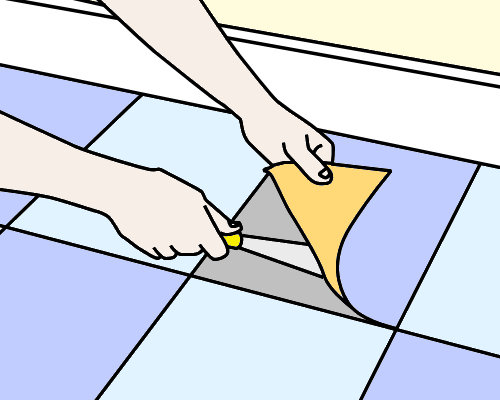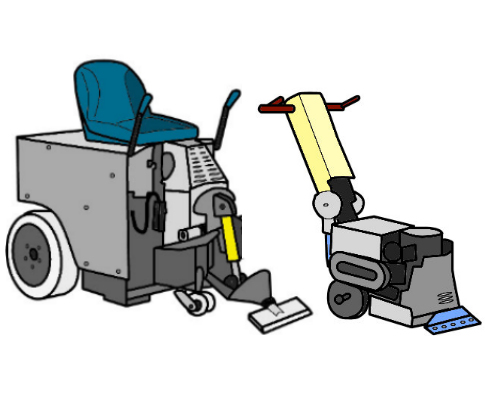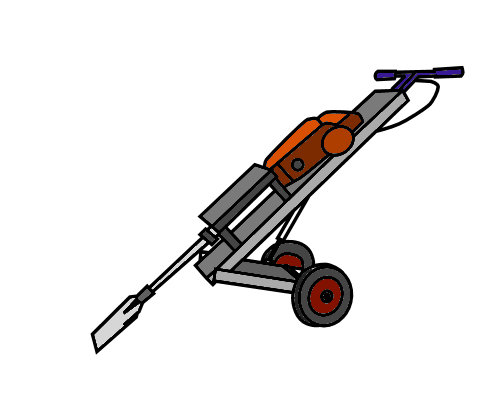Removing resilient flooring
 Audio for slide 1 (mp3 |6|KB)
Audio for slide 1 (mp3 |6|KB)
Up until the late 1980s, many resilient flooring products contained asbestos.
If you're presented with a floor that you suspect might contain asbestos, you should assume that it does and take all necessary precautions until you're able to confirm otherwise.
Note that 'asbestos containing material' (ACM) may include the floor covering, backing, lining felt, cutback adhesive or other types of adhesive.

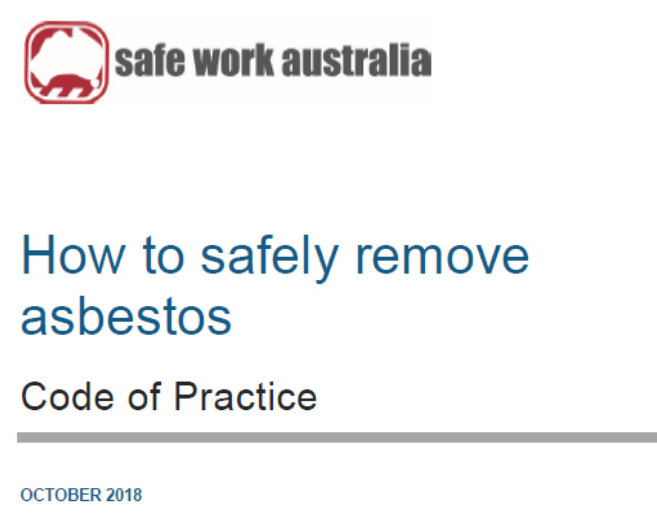 Audio for slide 2 (mp3 |6|KB)
Audio for slide 2 (mp3 |6|KB)
There are testing services available throughout Australia that can take samples from the old floor and determine whether there is any ACM present.
If the floor does contain ACM, the removal must be done by a licensed asbestos remover if:
- there is 10 m2 or more of non-friable (bonded) ACM to take up
- there is any amount of friable ACM involved (that is, material that can be crumbled into a fine material or dust by hand).
Note that even if there is less than 10 m2 of non-friable ACM involved and the client or another worker does the removal themselves, they must still take all necessary precautions and comply with the code of practice relating to removing asbestos-based products.

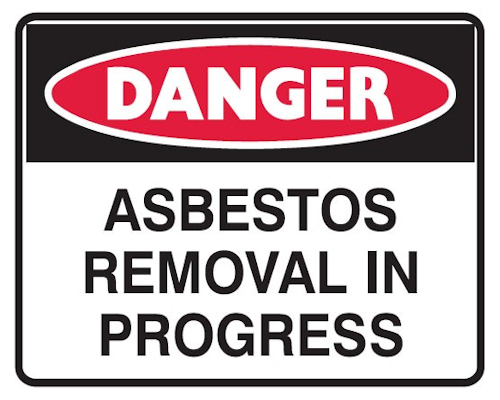 Audio for slide 3 (mp3 |6|KB)
Audio for slide 3 (mp3 |6|KB)
This includes:
- sealing off the area before starting the removal process
- wearing appropriate PPE
- bagging and transporting the ACM in an approved way
- disposing of the material at a licensed facility.
Always bear in mind that the extra work involved in managing ACM products can be very expensive, and needs to be properly costed into your quotation if you're responsible for their removal.
Otherwise, you may find yourself doing the additional work for nothing, or taking shortcuts to try to get the job done on a tight budget.

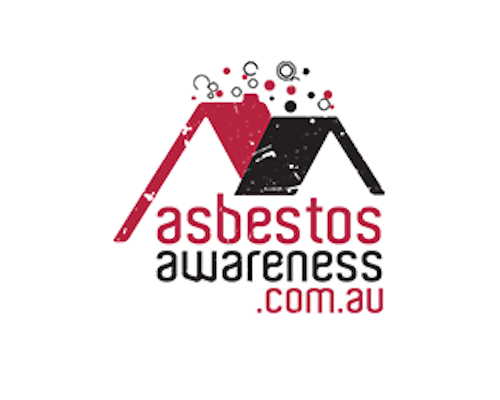 Audio for slide 4 (mp3 |6|KB)
Audio for slide 4 (mp3 |6|KB)
We won't go into further detail in this unit on how to remove flooring products that contain ACM, since it's a task that requires additional training and supervised practice on-the-job.
For more information on this topic, go to the website asbestosawareness.com.au.
For the remainder of this lesson, we'll cover the procedures involved in removing resilient floor coverings that do not contain ACM.
We'll also briefly discuss the option of not removing the old covering at all, and laying the new covering on top of the old one.

 Audio for slide 5 (mp3 |6|KB)
Audio for slide 5 (mp3 |6|KB)
Leaving the old resilient floor covering in place
If the old resilient covering is in good condition and well bonded to the subfloor, you may be able to leave it in place.
Before you consider this option, however, you'll need to establish whether the new product can be installed on top of the old covering in an approved manner without voiding the floor covering manufacturer's warranty.
In general, this option would only apply to loose-lay or low-adhesive products.
The floor covering manufacturer's installation guide should provide more information, but if you're still not sure you should contact their technical department for advice.

 Audio for slide 6 (mp3 |6|KB)
Audio for slide 6 (mp3 |6|KB)
Depending on the products involved, the floor preps may include one or both of the following techniques:
- removing any wax and other finishes on the old floor surface by wet stripping
- filling the embossing in the old resilient covering with an embossing leveller.
These techniques are covered in other units in the Floor Technology series, in particular:

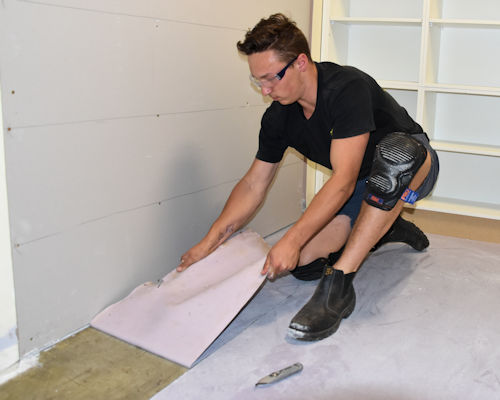 Audio for slide 7 (mp3 |6|KB)
Audio for slide 7 (mp3 |6|KB)
Removing resilient sheet products (non-ACM)
The different techniques used to remove resilient sheet flooring are similar to those used for adhesive-fixed carpet, as described in the previous lesson.
In some cases, you may be able to pull back the material by hand, starting in one corner and working across the floor in narrow strips.

 Audio for slide 8 (mp3 |6|KB)
Audio for slide 8 (mp3 |6|KB)
Cut each strip into a manageable width with a utility knife.
Take care not to damage the substrate if it's going to become the new floor surface (such as a solid timber floor).
If you need to soften up the adhesive before blade scraping it, you can spray water on the floor.
Hot water is also useful for more stubborn adhesive.
Don't use chemical adhesive removers, as they will leave a residue on the substrate that will be difficult to get off.

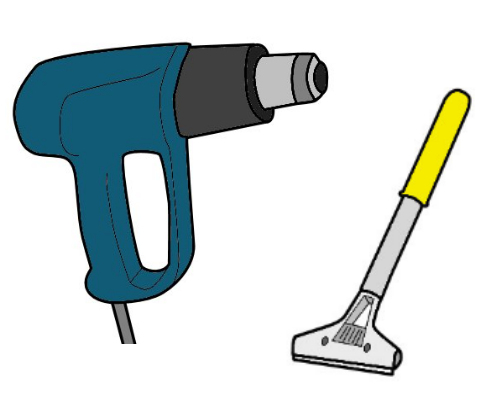 Audio for slide 9 (mp3 |6|KB)
Audio for slide 9 (mp3 |6|KB)
Another option for softening up adhesive is to use a heat gun.
The hot air can be aimed directly at the adhesive, or at the top surface of the floor covering, allowing the heat to transfer to the underside.
Make sure the heat gun is not held too close to any flammable materials, because there is a risk that it might start a fire.
A hand scraper can also be used to chip away the adhesive while you peel back the resilient sheet with your other hand.


Learning activity
Audio 13 (mp3 |6|KB)Write up a brief comparison of the following methods of taking up vinyl flooring:
- hand scraping plus a heat gun
- hand scraping plus water
- machine scraping with a floor stripper or chisel scraper.
You may do some research on the web or look up product brochures or datasheets for extra information.
You can also read ahead to the future lesson, Removing adhesive residue - although keep in mind that it deals more specifically with the removal of old adhesive after the floor covering has already been taken up.
The sorts of issues you should consider in your comparison include: size of the job, speed and efficiency, noise, dust, availability of power, possibility of live wires near water, impact on other people in the building, and any other factors that you think are important.






